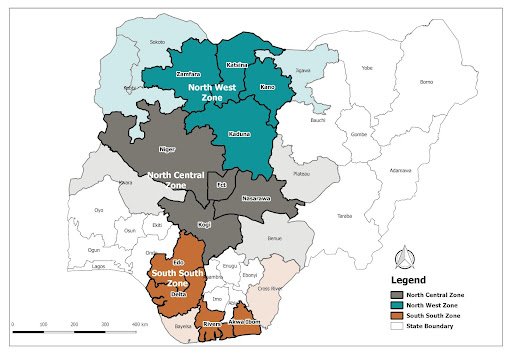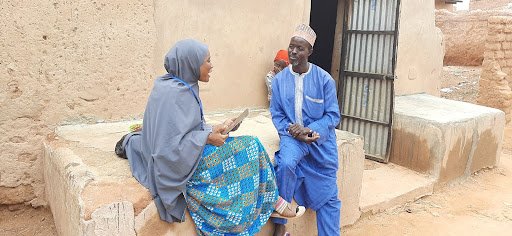By Mohammed Bello and Tope Falodun
The focus on renewable energy in recent years has been on the rise, this is largely due to the bedeviling problems surrounding nonrenewable energy sources. It has been ascertained that the world will face severe problems related to the depletion of traditional (non-renewable) energy resources (Kahia et al., 2016) as a result of the exhaustive nature of the resources viz a viz growing population and industrial activities. Apart from the finite availability of this energy type, it has environmental issues, the increasing magnitude of global energy consumption and its rapid growth have severe environmental implications (Irandoust, 2016), It is now well established that oil and coal exploitation have ultimately led to forest destruction, biodiversity extinction and natural disasters. (Kahia et al., 2016) the consumption of this energy type also increases carbon dioxide emissions. These emissions are considered the main cause of global warming (Ben et al., 2017). These necessitate the surge of suitable energy for the environment and are inexhaustible.
Renewable energy forms a key milestone in Africa for social and economic development. The lack of access to electricity by most people - “600 million in Africa'', and one of the targets of the Sustainable Development Goals (SDG) No. 7 is to expand infrastructure and upgrade technology for supplying modern and sustainable energy services for all in developing countries, brought about the need to improve access to electricity. A common method to assess latent electricity consumption already being applied in Nigeria bringing in existing knowledge from various disciplines to the Nigerian and West-African context and sharing results and tools openly with all stakeholders from questionnaires and interviews with relevant stakeholders forming partnership with several local (Covenant University, Obafemi Awolowo University, Université Abdou Moumouni - WASCAL program, PowerGen Renewable Energy, Creeds Energy, Clean Technology Hub, Rural Electrification Agency, the Government of Nigeria) and international (Technical University Berlin, Wuppertal Institut, MicroEnergy International, Fosera) for the PeopleSuN, a highly inter- and transdisciplinary project which seeks to improve on this status quo, having Reiner Lemoine Institut (RLI) an independent non-profit research institution whose mission is to find paths to a sustainable energy supply based on 100% renewable energy sources partnering with the Funders - ‘PeopleSuN project funded under “CLIENT II - International Partnerships for Sustainable Innovation'' in the Framework Program Research for Sustainable Development towards goal number seven (7) engaged the expertise of eHeath Africa (eHA) a non-governmental organization focused on improving health systems with core technical expertise in Health Delivery Systems, Public Health Emergency Management Systems, Disease Surveillance Systems, Laboratory & Diagnostic Systems, Nutrition, and Food Security Systems, and sustaining program interventions with a mission to build stronger health systems through the design and implementation of data-driven solutions that respond to local needs and provide underserved communities with tools to lead healthier lives.
Scope
eHA as the consultant was ‘responsible for the turn-key implementation of detailed energy surveys of households and enterprises across 247 non-urban enumeration areas of three geo-political zones in Nigeria’ involving a total of 12 states as follows;
Kaduna, Kano, Katsina, and Zamfara within the North-Western zone
FCT, Nassarawa, Niger, and the Kogi states within the North-Central zone
Akwa-Ibom, Delta, Edo, and the Rivers states within the South-South zone.
Fig 1. Map showing implemented states
Methodology/ Implementation Approach
The methodology used in collecting the data was using a customized Kobo Collect smartphone and a conjoint laminated sheet. eHA conducted detailed energy surveys in Households and Enterprises within these zones.
Field Data Collector administering Household survey in one of the EAs at Malumfashi LGA of Katsina State
From the outset of the survey, one of eHA’s innovative data-driven products, Planfeld was leveraged for planning and monitoring of the survey field activity. A total of 60 enumerators and 12 State supervisors were engaged in the quantitative survey activity. 3,952 Households and 1,235 Enterprises were targeted and data collection started on August 7, 2021. A team comprising 2 enumerators (mostly paired male and female) worked in an EA to cover 16 households and 5 enterprises in each EA. They were to cover 1 EA daily including travel time. Teams set out daily to cover EAs as planned and moved into new EAs to continue coverage, with plans to complete unfinished ones the following day. Gatekeepers, including community leaders and local authorities, were consulted before enumerators’ visits and commencement of activity at the LGA and community levels.
Fig 3. Table showing targeted enumerating areas (EAs)
Data Quality Control and Quality Assurance procedure
To ensure accurate and reliable results from the fieldwork, three categories of validation were used. Attribute validation control, Lineage validation, and spatial validation. All these validations serve as data quality control (QC) for the survey. These controls were checked at three (3) levels of data quality.
Fig 4: Quality Assurance procedure
Three levels of controls:
Field Enumerator checks: Field enumerators ensured that all Quality Control (QC) checks were completed.
Supervisor checks: Supervisors ensured that all the enumerators met their daily target, also ensured that all QC checks were passed. The supervisor ‘approved’ the forms from the Kobo toolbox platform after validation
Data Analyst checks: The Data Analyst runs the quality control check on the forms and is sure that all validations were done. Then the data was released to the partners to ensure the data was valuable, complete, and precise.
The 3 cycles of data validation continue until a desirable result was met.
Data Process and Analysis
The workflow of the data process started from the Open Data Kit (ODK) forms development. We produced the forms in 3 different languages, English, Nigerian Pidgin, and Hausa. This was followed by the deployment of survey tools on the KoBo ToolBox platform. The two survey components- Household and Enterprise- possessed a questionnaire file each. The survey platform was then ready for submissions from the field which were made by the enumerators. After the data collection, the data cleaning exercise commenced which marked the end of data process activities as required by the partner.
Fig 5. A map depicting all implementing states with points collected overlayed
Results
The data were collected in a total of 3,961 Households and 1,232 Enterprises across the 12 states, with 9 EAs that were not visited due to insecurity amongst other issues.
Challenges
There were various challenges encountered during the implementation exercise across the 12 states. Insecurity cuts across the states as some secured areas before implementation became insecure while others are uniquely specific, these challenges are not limited to the following;
Enumerators' inability to complete targeted H/H and Ent in specific EAs as a result of security attack while conducting the survey. The states affected are Akwa-Ibom, Katsina, and Kaduna.
Torrential rain in Akwa-Ibom, Delta, Edo Rivers, and FCT led to obstruction to daily implementation with re-visit plans rescheduled.
The bulkiness of the survey led to the refusal to consent or complete the questionnaire in some households across the implemented states.
Lessons Learned
Communities were reluctant to willingly cooperate with enumerators without the presence of a known local guide at the initial stage. This was later resolved by the collaboration of supervisors and the enumerators who worked hard to engage and onboard local guides, despite the lack of payment factored for local guides. Provision of incentives (payment) for local guides should be considered and budgeted for in surveys to get the buy-in of communities.
Secure enumerating areas (EAs) before implementation become highly insecure after commencement. information from the security situation reports by the Security Adviser is shared with the team daily in addition to pre-training/instruction to source valid information about the environment locally before moving out daily.
In this case, the client is the one to provide EAs to be implemented by a consultant, adequate EAs as backup is to be provided for the exchange of inaccessible ones due to whatever reasons. Alternatively, pre-agreement of additional EAs is to be provided by the consultant and agreed upon before the implementation planning phase.
The Program Partners







